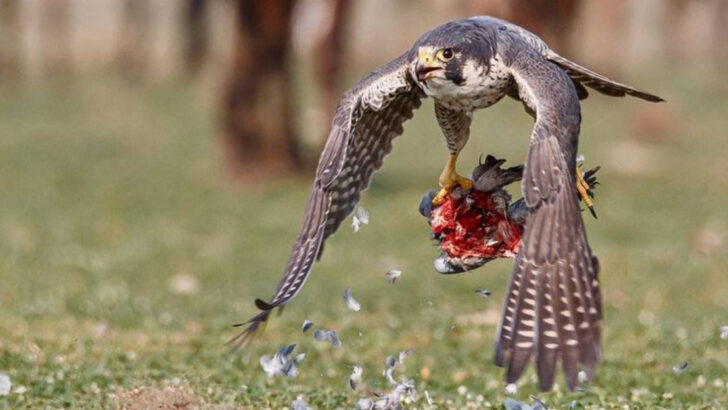Not all birds are here to sing you a lullaby—some are here to kill.
Your backyard might look peaceful.
A flutter of wings. A chirp. A flash of color.
But behind those bright feathers and sweet songs lurks a sharp beak, a piercing gaze, and a killer’s instinct.
These birds aren’t passive ornaments. They’re assassins in the treetops.
From tiny warblers that hunt like ninjas to hawks that drop like missiles from the sky, these feathered predators are built for the hunt—swift, silent, and merciless. They’ll snatch insects mid-air, tear into small mammals, and pluck frogs straight from garden ponds.
Some of them you’d never suspect.
Others? You’ll never see coming.
Let’s meet 13 backyard birds that turn your peaceful patio into a battleground—and find out exactly what they’re hunting.
Northern Shrike

The Northern Shrike, often called the ‘Butcher Bird’, is known for its gruesome hunting tactics. With a sharp beak and keen eyesight, it hunts small mammals and insects.
It often impales its prey on thorns or barbed wire to store for later. This bird’s ability to mimic the songs of other birds helps it to lure its prey. Despite its small size, the Northern Shrike is a formidable predator.
Its name, derived from its feeding habits, reflects its relentless pursuit of food. In winter, it is commonly spotted in open fields or forest edges.
Cooper’s Hawk

Cooper’s Hawk is a stealthy predator, often seen darting through trees with incredible agility. This bird of prey hunts smaller birds and rodents. Its rounded wings and long tail make it perfectly adapted for navigating dense forests at high speeds.
Often, Cooper’s Hawks are spotted near suburban areas, seizing any opportunity for a quick meal. They’re known for their surprise attacks, swooping in swiftly to catch their unsuspecting prey off guard.
Though they may appear inconspicuous, these hawks are lethal hunters capable of remarkable feats.
American Kestrel
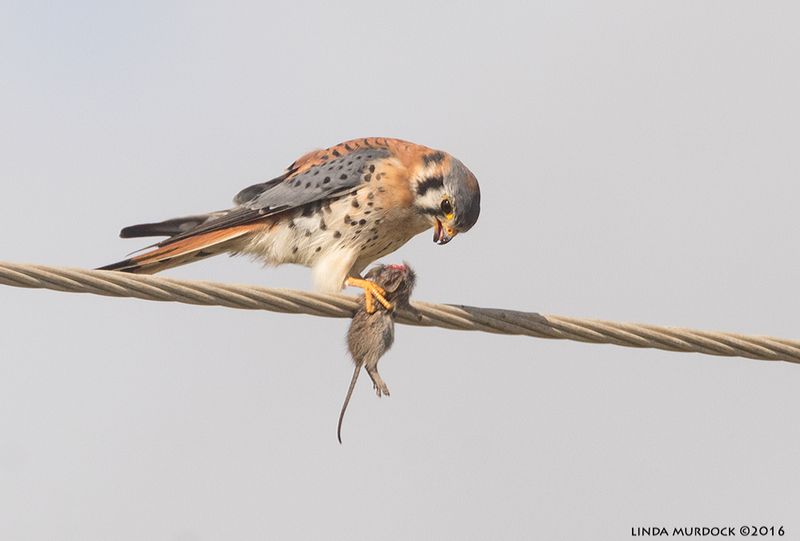
The American Kestrel, North America’s smallest falcon, is a master of the skies. With striking plumage and a fierce gaze, it’s known for hovering mid-air before diving to catch insects, small mammals, and birds.
This bird uses its keen eyesight to spot prey from a distance. Found in open fields and urban areas alike, the Kestrel’s hunting prowess is unmatched.
Watching one hunt is a spectacle of nature’s precision and power, showcasing a perfect balance of grace and aggression. Its adaptability makes it a common sight in diverse habitats.
Barn Owl
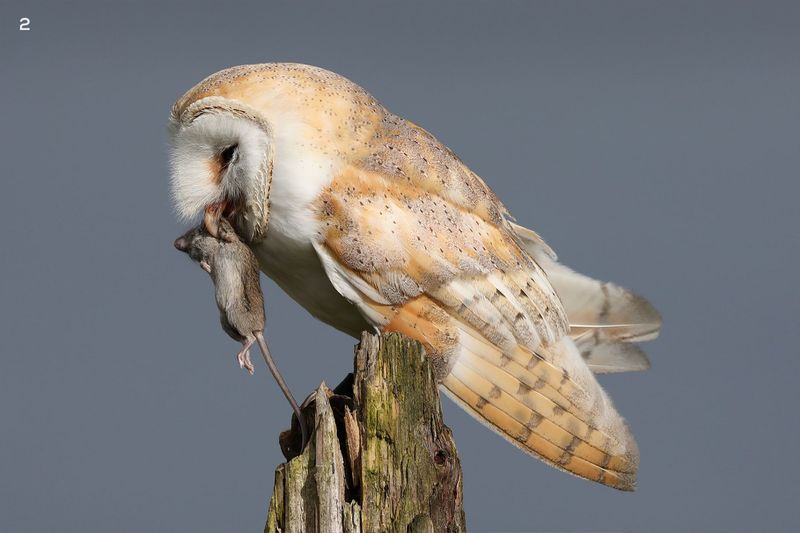
The Barn Owl, with its ghostly appearance and silent flight, is an expert night hunter. Its heart-shaped face enhances its hearing, allowing it to locate prey even in complete darkness.
This owl primarily hunts small mammals, including mice and voles. Its flight is eerily silent, owed to specialized feathers that muffle sound. Barn Owls are often seen in rural areas, where they hunt over open fields.
Despite their ethereal beauty, these owls are efficient killers, relying on stealth and precision to catch their prey.
Great Horned Owl
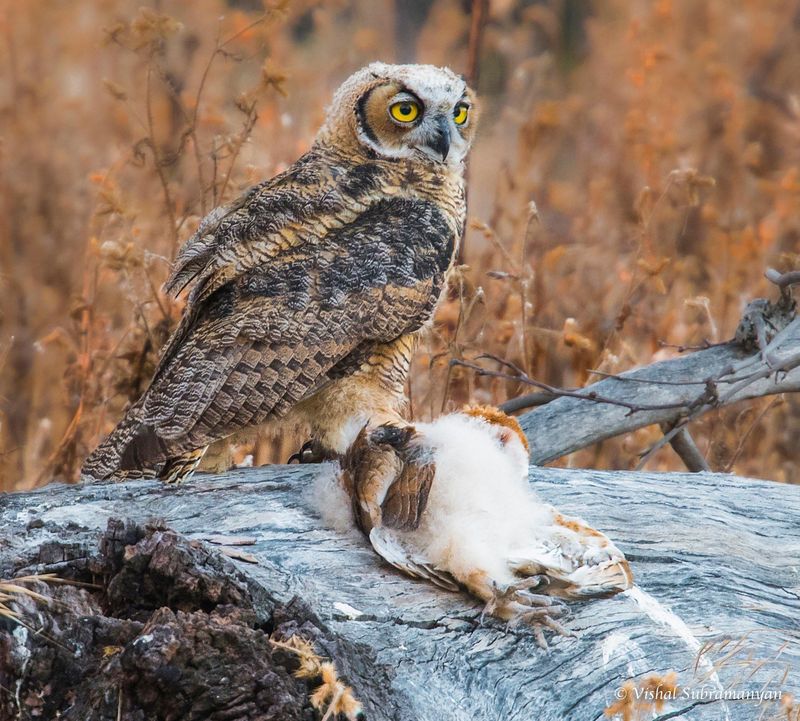
Known as one of the most formidable nocturnal predators, the Great Horned Owl hunts a variety of prey, including mammals, birds, and even other raptors.
Its powerful talons can exert a force equivalent to a human’s handshake, making it capable of subduing larger animals. This owl’s distinctive ear tufts and deep hooting call make it easily recognizable.
Often found in diverse habitats, from forests to deserts, the Great Horned Owl is adaptable and robust. Its keen hunting skills and strength have made it a legendary figure among birds of prey.
Red-tailed Hawk
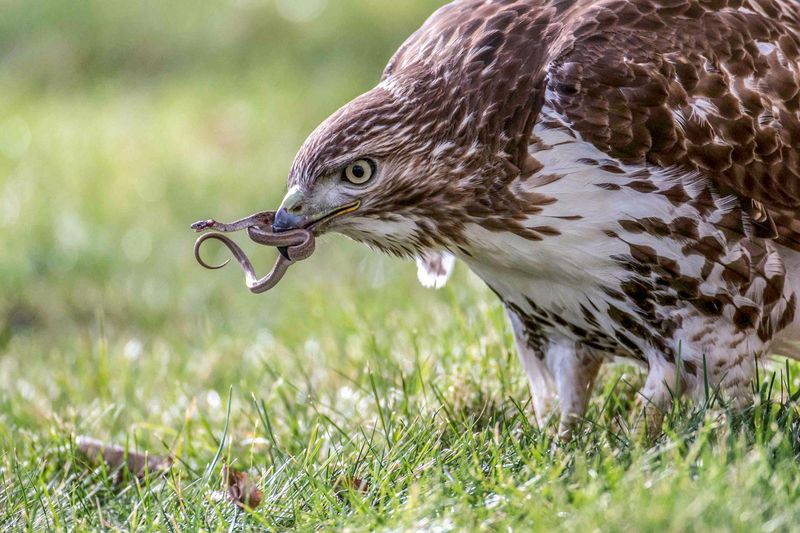
The Red-tailed Hawk is a common sight across North America, soaring with grace and authority. Its sharp eyes can spot prey from great heights, primarily hunting small mammals and birds.
This hawk’s distinct rust-colored tail feathers make it easily identifiable. Often, it perches on roadside poles, scanning for movement. Its adaptability to various environments, from deserts to urban areas, has allowed it to thrive.
The Red-tailed Hawk’s impressive wingspan and majestic flight are a testament to its prowess as a top predator.
Eastern Screech Owl
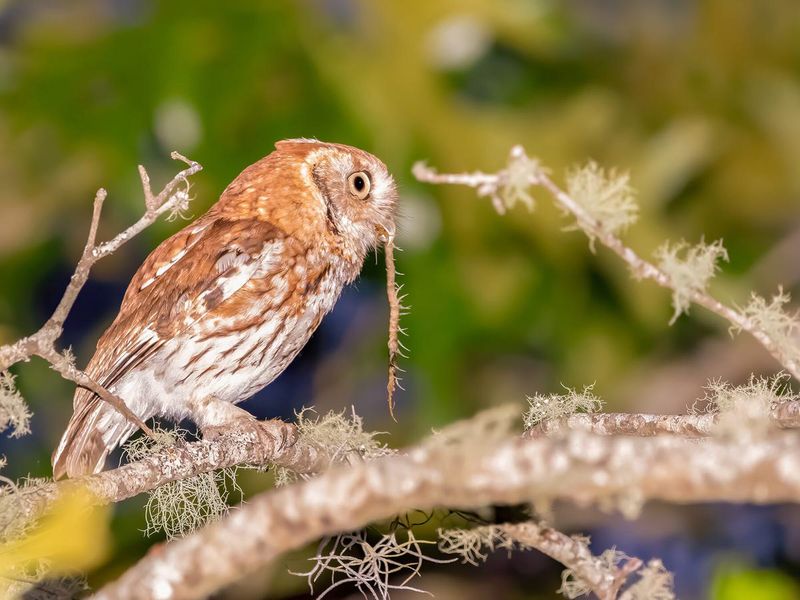
Despite its small size, the Eastern Screech Owl is a skilled hunter. This owl uses its excellent camouflage to remain undetected by both prey and predators.
It hunts insects, small birds, and mammals, relying on stealth and surprise. Found in wooded areas, its trilling calls often go unnoticed. The Eastern Screech Owl’s ability to adapt to changing environments, including suburban areas, has helped it survive.
Its presence is often revealed only by its distinctive calls, making it a mysterious yet effective hunter of the night.
Sharp-shinned Hawk

The Sharp-shinned Hawk is a small but fierce hunter, known for its swift attacks. It preys mainly on songbirds, often catching them mid-flight. This hawk’s sharp talons and agile flight enable it to maneuver through dense vegetation with ease.
Found in forests and suburban areas, it’s known for its rapid chase sequences. The Sharp-shinned Hawk’s hunting style is a blur of speed and precision, making it a formidable predator despite its size.
Its presence in a backyard often spells trouble for smaller birds.
Peregrine Falcon
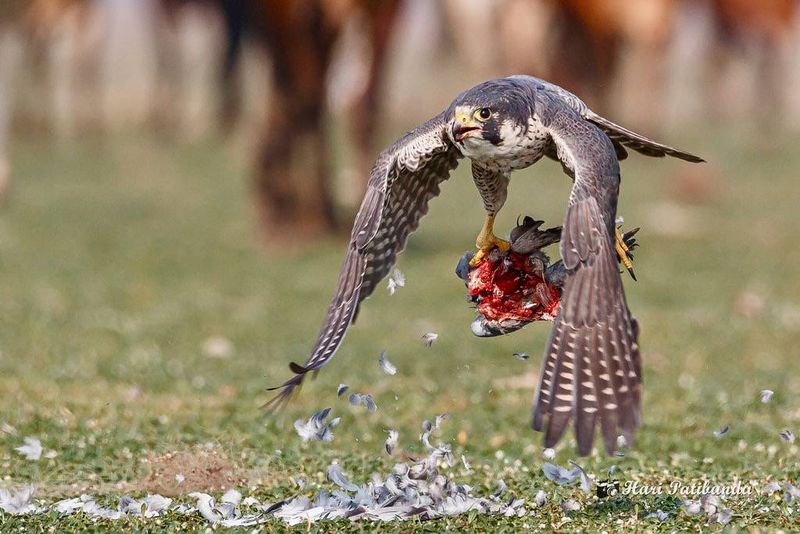
The Peregrine Falcon is celebrated for being the fastest bird in the world. It can reach speeds over 200 mph during its hunting stoops. This remarkable speed allows it to catch birds mid-air with precision.
Found in various environments, from city skyscrapers to open countryside, the Peregrine Falcon’s adaptability is impressive. Its hunting prowess is a blend of speed, agility, and strategy.
With keen eyesight and unmatched aerodynamics, it remains an apex predator in the avian world. Its presence is both awe-inspiring and feared among its prey.
Osprey
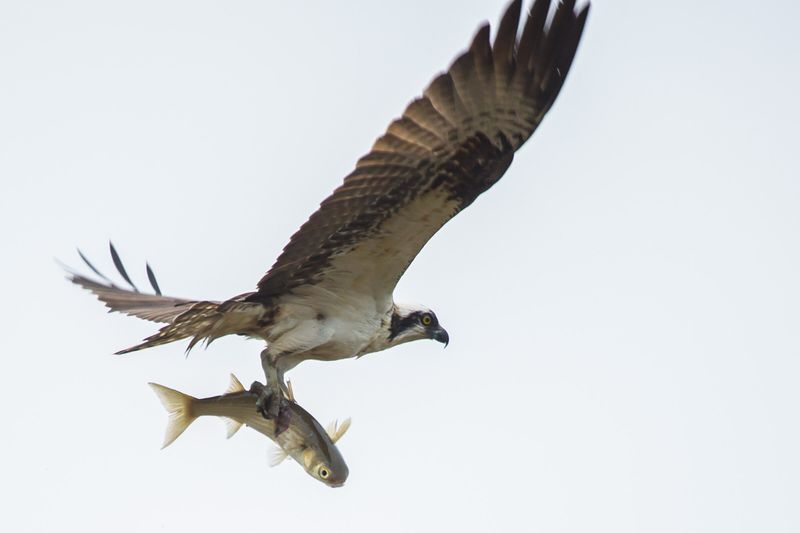
The Osprey, often seen near water, is a specialized fish hunter. With its reversible outer toes and sharp talons, it can grasp slippery fish with ease. This bird’s large wingspan allows it to hover above water before diving feet-first to catch its prey.
Found near coasts, rivers, and lakes, the Osprey’s diet consists almost exclusively of fish. Watching an Osprey hunt is a breathtaking experience, showcasing its unique adaptations and hunting skills.
Its success as a predator lies in its ability to exploit aquatic environments effectively.
Merlin
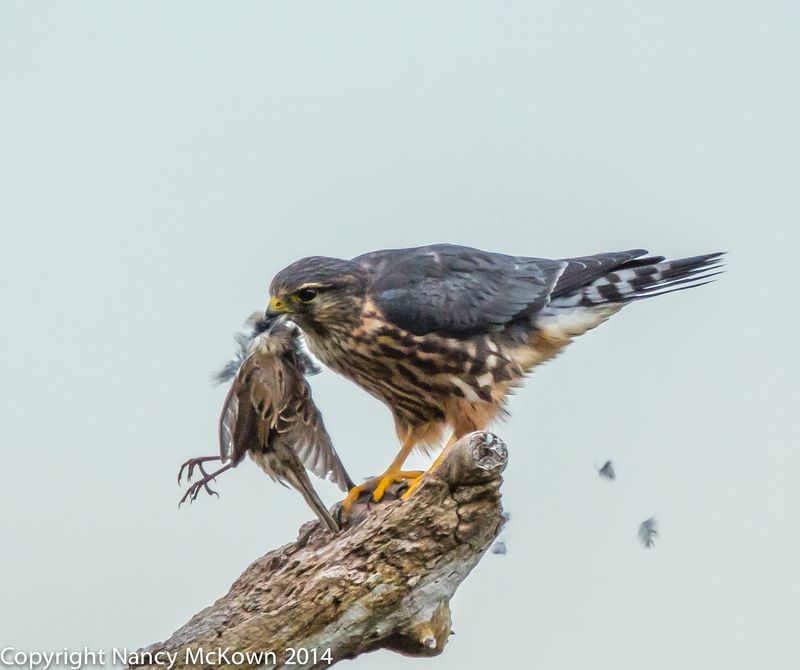
The Merlin, a small but mighty falcon, is known for its relentless pursuit of prey. It primarily hunts small birds, chasing them with remarkable speed and agility.
This falcon’s compact size belies its ferocity, making it a feared hunter in the bird world. Found in open fields and forest edges, the Merlin’s hunting style is a testament to its tenacity.
Its dark, slate-gray plumage aids in camouflage, while its keen eyesight ensures no prey escapes its notice. Despite its size, the Merlin’s impact as a predator is significant.
Common Grackle

The Common Grackle is known for its glossy, iridescent feathers and opportunistic feeding habits. Although primarily a forager, it occasionally displays predatory behavior.
It hunts insects, small amphibians, and even the eggs and nestlings of other birds. Found in flocks, grackles are often seen in agricultural areas, where they can become a nuisance.
Their intelligence and adaptability allow them to exploit various food sources. The Common Grackle’s bold nature and resourcefulness make it a surprising yet effective predator in its habitat.
Blue Jay

The Blue Jay, often seen flitting around suburban trees, is more than just a pretty bird. Known for its intelligence and complex social behavior, the Blue Jay is also a formidable predator. It has been observed raiding nests for eggs and young birds, showcasing a ruthless side that contrasts its colorful appearance.
With a sharp beak and agile movements, the Blue Jay is a master at navigating dense foliage. This cunning bird can often be spotted mimicking the calls of hawks to scare other birds away from food sources. Such deceptive tactics highlight its strategic approach to survival.
Interestingly, the Blue Jay’s diet is varied, including insects, nuts, and seeds. However, its predatory behavior truly shines when it targets the nests of smaller birds, demonstrating a surprising duality in its character.

